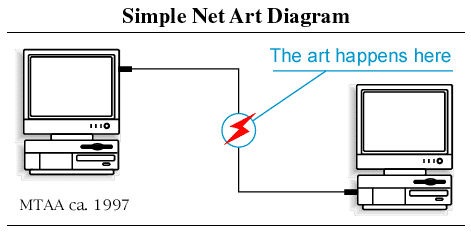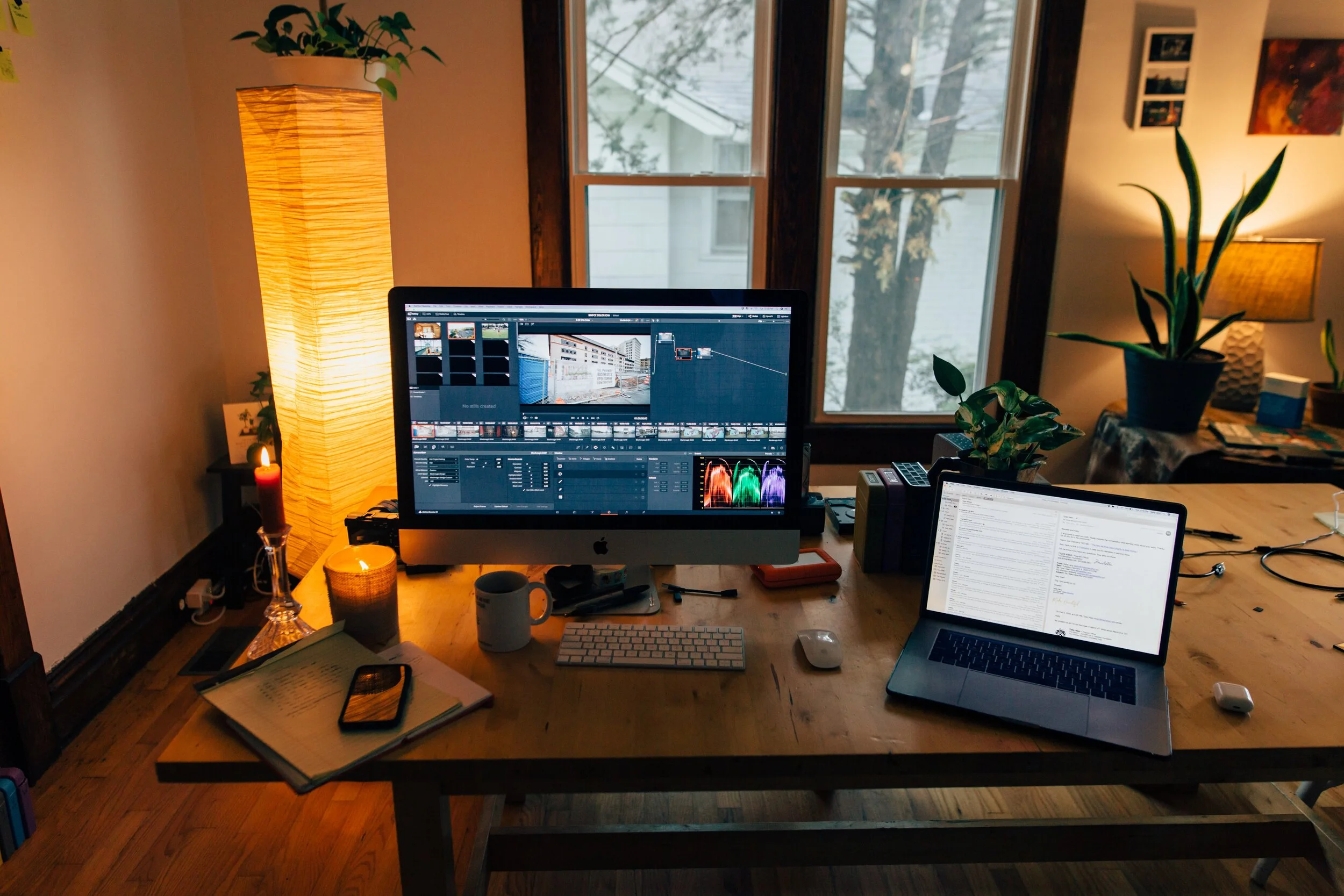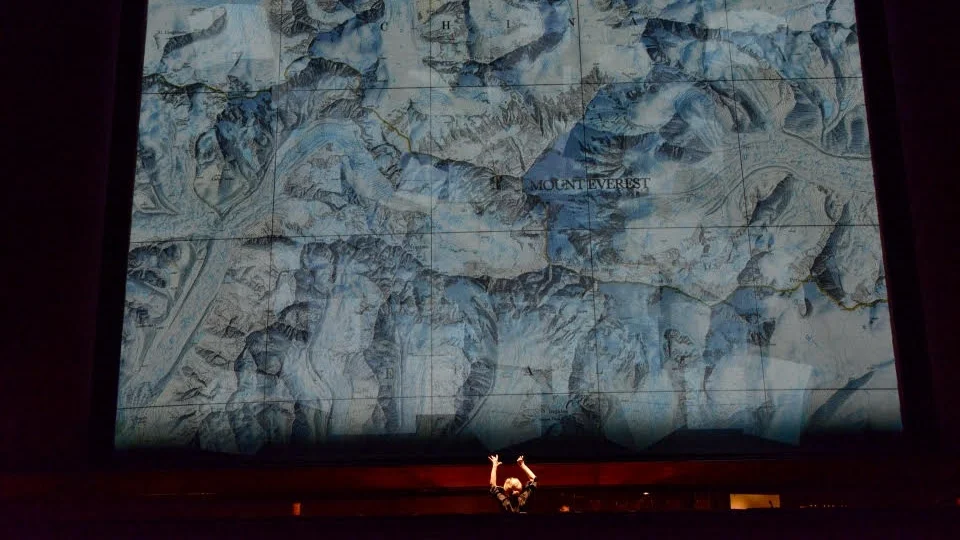Theatre live broadcasting has existed across various media for nearly a century. In its early days, it was delivered through radio and television. In the 21st century, advancements in technology enabled broadcasts on large cinema screens. During and after the COVID-19 pandemic, however, lockdowns and shifts in audience behavior appeared to redirect attention back to small screens. This research explores the meaning of “liveness” and whether live theatre broadcasts, sometimes costing up to $3 million, are worth the investment.
An Introduction to the Net Art Network: Part 1
With more critiques of large internet companies gaining traction, people are beginning to question the hegemonic nature of the internet and the power structures that exist on the web, both of which define net art as school of thought. It is the work of net artists to develop, critique, and re-imagine the development of human experience as it relates to and exists on the web. This post gives an overview of net art and two examples of early net artists.
Connections and Gaps between Artists’ and Institutions’ New Media Preservation Efforts
Media art, which frequently involves data, software, or electronic devices, keeps facing the challenge of technological obsolescence. Since preservation and conservation are fields often dominated by museums and similar organizations, a contrast exists between personal and institutional practices. In some cases, artists rely on museums for technological support. This article looks at new media artists’ firsthand experiences and media artworks donated to the MoMA.
Home Studio Technology: Software
This article—focused on software—is the second in a series focused on informing our readers about home studio technology. The broad categories covered in this post—graphics and illustrations, audio, video, streaming, web services, and podcast services—detail the most popular tools and well-regarded alternatives that can help you improve your working-from-home experience.
Home Studio Technology: Hardware
The quarantine and social distancing guidelines for this pandemic have shifted many areas of life online. Many arts administrators, along with those in other career fields, are in their seventh month of working remotely and may be looking for ways to improve their experiences. This guide is meant to help improve the quality of experience for virtual work and social meetings through home studio technology, and to provide creators and hobbyists with information to get started with or improve their projects.
The Future of Technology in Opera
Immersion, is it AR/VR or Just R?
#TBT: Highlighting New Media Art
While technology and art combine frequently to facilitate the practices of arts managers, they are simultaneously blending to create a whole new artform--new media art. All bets are off with this medium, as an array of tools, approaches and capabilities make it impossible to label as either visual or performance; in many cases, the art goes even farther and provides a social benefit to those who experience it. This week’s TBT provides managers with a roundup of the research we’ve done so far to start piecing together a picture of what new media art means for the future of management in all types of arts venues and forums.
Silicon Struggle: The Battle for The Bay Area Arts' Scene
If you told the average San Francisco resident 40 years ago that the art scene in the Bay Area would be gasping for life in 2015, they probably would have laughed in your face. But it is 2015, and that is the reality we are facing. The tech giants have moved in, and tension is building between the Silicon Valley community and its non-profit entities. In particular, arts organizations seem to be at an extreme disadvantage for a few reasons:
How Museums Are Dealing With New Media Art: Part 2
In 2000 the Washington DC based Smithsonian American Museum of Art announced the creation of the New Media/New Century Award. The New Media/New Century Award became one of first projects to support new art created for the Web. The museum accepted proposals for original Web-based projects that explored the subject of American landscape, and how the new medium of Web art affected the American landscape as a subject.
Though the project is over 10 years old, it demonstrates the early and exceptional sensibility of the Smithsonian’s curators. They understood the growing relevance new media art and especially Web-art, and its impact not only on people’s everyday perceptions, but also on the art scene as a whole.
Promoting Digital Media Art through Digital Media tools
In our technology-stuffed world, the difficulties faced by video artists seem paradoxical. Due to high up-front costs, and the difficulty of handling and selling digital technologies, established institutions such as art galleries and museums often shun their work. Artists may look at the entertainment industry as an alternative, but find themselves unfulfilled, as musicians typically come first in these sorts of collaborations.
The Google Cultural Institute
Once a search engine for the curiously puzzled, the Google of today is not only a superior resource gateway but also a vast and interconnected information hub. When in doubt about your train of thought, just hop on aboard the Google express. Even for doubts verging on the impossible; search for walking directions from the Shire to Mordor on Google Maps and you are admonished that “one does not simply walk into Mordor.”

The dangers of Sauron aside, today Google can just as easily claim that one does not simply stop googling. It is now a verb, a translation service, a virtual wallet, a communication and storage platform, a social network, and more recently, a cultural institute.
“The Google Cultural Institute helps preserve and promote culture online. With a team of dedicated engineers, Google is building tools that make it simple to tell the stories of our diverse cultural heritage and make them accessible worldwide. We have worked with organisations from across the globe on a variety of projects; presenting thousands of works of art online through the Art Project, digitising the archives of Nelson Mandela and showcasing the Dead Sea Scrolls.”
Of the initiatives of the Google Cultural Institute, the Art Project and the Dead Sea Scrolls have received the most amount of attention. As such, we opted to take a look at some of the other projects that are changing the landscape (quite literally) of online cultural preservation.
Nelson Mandela Digital Archives Project
 In 2011, the Nelson Mandela Centre of Memory partnered with Google to digitize and disseminate the archives of Nelson Mandela. The collaboration has resulted in a visually engaging timeline of Nelson Mandela’s life, populated with photographs, diary entries, letters, and excerpts from his autobiography. The site is worth a visit because it both explains and celebrates the enduring legacy of the South African statesman.
In 2011, the Nelson Mandela Centre of Memory partnered with Google to digitize and disseminate the archives of Nelson Mandela. The collaboration has resulted in a visually engaging timeline of Nelson Mandela’s life, populated with photographs, diary entries, letters, and excerpts from his autobiography. The site is worth a visit because it both explains and celebrates the enduring legacy of the South African statesman.
World Wonders Project The World Wonders Project is perhaps the next iteration of the Street View mode in Google Maps. In a partnership with UNESCO, the World Monument Fund, and Getty Images, the project “allows you to navigate virtually around some of the most important, historical and beautiful world heritage sites through panoramic street-level images, experiencing these places almost as if you were there.” The project is an impressive window to the world but is perhaps most suited to educational purposes.
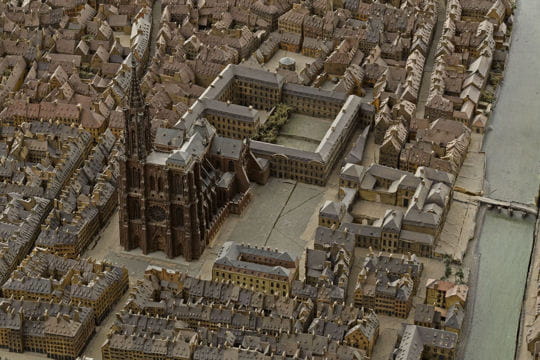 La France en relief
When the Grand Palais in Paris organized an exhibition showcasing 17th and 18th century relief maps of fortified towns in France, Google helped render seven of those models in 3-D. As such, seven fortified towns in France were built anew, in all their artisanal detail, on Google Earth. Furthermore, the reach of the exhibition was no longer limited by the very concept being showcased; geography.
La France en relief
When the Grand Palais in Paris organized an exhibition showcasing 17th and 18th century relief maps of fortified towns in France, Google helped render seven of those models in 3-D. As such, seven fortified towns in France were built anew, in all their artisanal detail, on Google Earth. Furthermore, the reach of the exhibition was no longer limited by the very concept being showcased; geography.
La Pavillon de l’Arsenal (Paris Center for Architecture and Urbanism) Just as Google re-envisioned the past at the Grand Palais, at La Pavilon de l’Arsenal, it envisioned the future. Visitors were given a chance to explore the urban landscape of Paris of 2020 through “the first ever 48 screen interactive Liquid Galaxy display, which featured “3D models of the buildings, designed but not yet built, by architects such as Patrick Berger and Jacques Anziutti, Jean Nouvel and Rudy Ricciotti.”
Yad Vashem
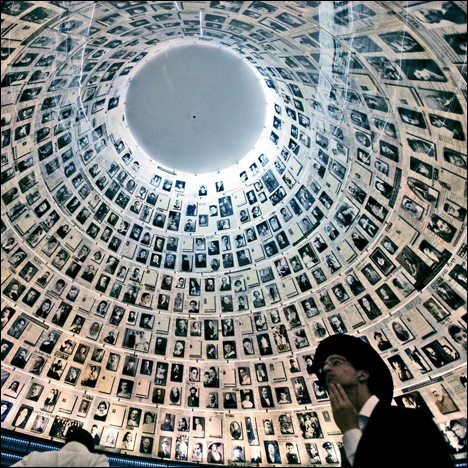 Google has helped digitize the vast archives of Yad Vashem, which is “the world center for documentation, research, education and commemoration of the Holocaust.” Through a technique called optical character recognition (OCR), Google has enabled families to search for both documents and images belonging to their relatives.
Here is an example given by Google: “To experience the new archive features yourself, try searching for the term [rena weiser], the name of a Jewish refugee. You’ll find a link to a visa issued to her by the Consulate of Chile in France.”
Google has helped digitize the vast archives of Yad Vashem, which is “the world center for documentation, research, education and commemoration of the Holocaust.” Through a technique called optical character recognition (OCR), Google has enabled families to search for both documents and images belonging to their relatives.
Here is an example given by Google: “To experience the new archive features yourself, try searching for the term [rena weiser], the name of a Jewish refugee. You’ll find a link to a visa issued to her by the Consulate of Chile in France.”
So there you have it, some of the Google's lesser known projects. Looks like culture is out there, quietly populating the internet. One need only google it.







